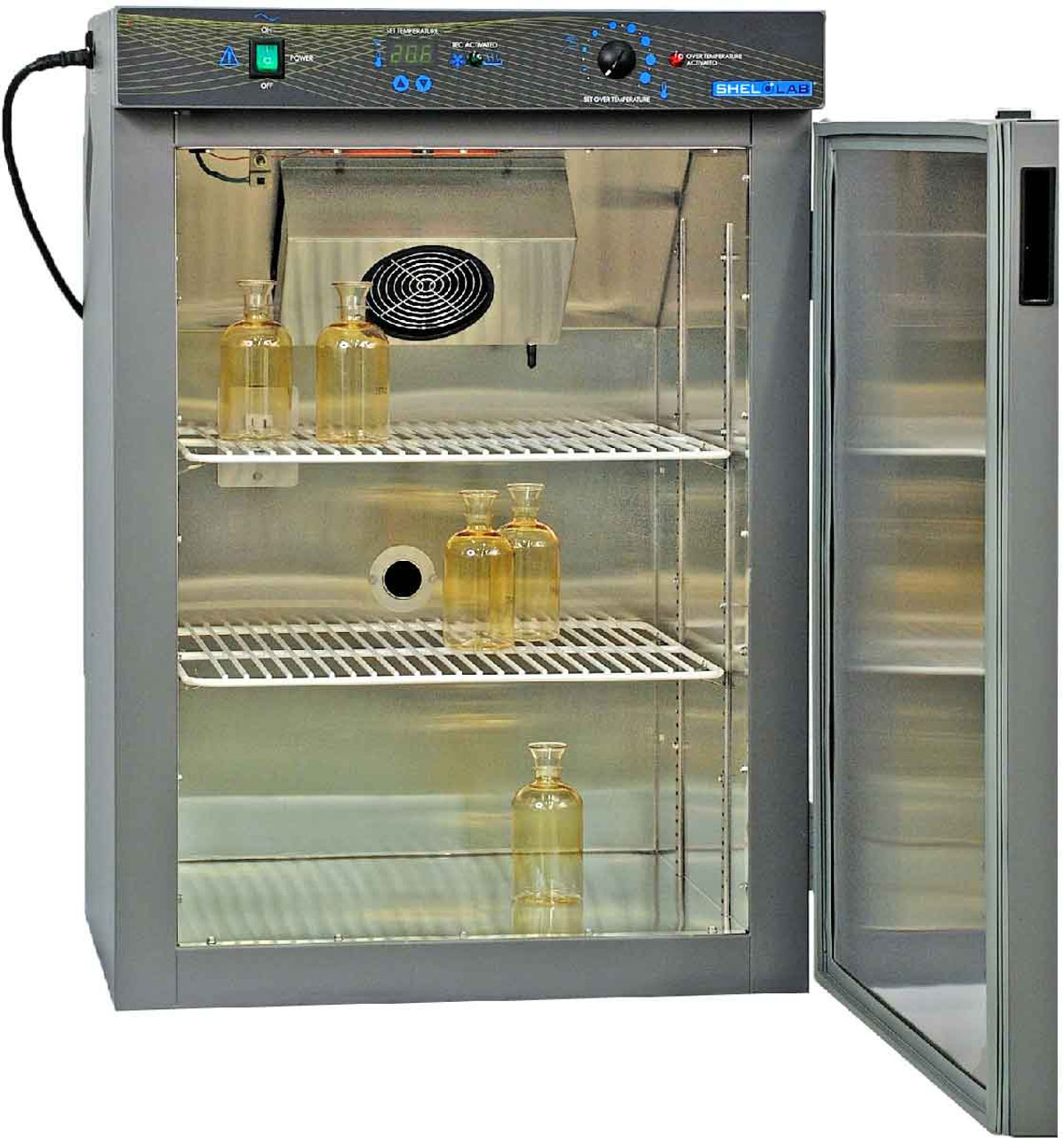Did you know the dictionary definition of incubator does not specify a heated chamber?
This is because "to incubate" means: "To keep something at a steady temperature so it can develop," and some things only grow in cool environments.
While a heated incubator might be used for growing tissue, bacteria and cells, a refrigerated incubator is the choice for crystallography, growing plants and raising insects.
Incubators with a heating element offer a temperature range usually between five to eight-degrees above ambient (room) temperature, up to sixty or seventy-degrees Celsius.
A refrigerated incubator requires a mechanism that can bring the temperature down several degrees below ambient temperature with some going as low as zero-degrees Celsius.
There are two basic types of cooling devices used in refrigerated incubators: A traditional compressor, or Peltier (thermoelectric cooling).
Microscopists and molecular biologists should be familiar with Peltier technology as it is often used to regulate the temperature of CCD digital cameras and is the backbone of many thermal-cyclers.
For a more thorough understanding of the principles at work with thermoelectric cooling, this article offers useful graphics and technical data.
We recently had the opportunity to present a prospect with a choice of two different Shel Lab refrigerated incubators, one that runs on a classic compressor system and the other thermoelectric cooling, and to explain the advantages/disadvantages of each.
One difference is the temperature range that each unit can cool.
The Shel Lab SRI3 refrigerated incubator can be operated from 0C - 45C while the Shel Lab SRI3P (Peltier cooled) is limited to: 15C - 45C.
Why is this?
The SRI3 uses a traditional compressor-based chiller coupled with a resistive heater to achieve temperature stability.
Meaning, it uses a motorized compressor to force halogenated gasses though coils as a means to remove heat from the chamber and deposit that heat into your lab space (i.e., refrigeration), and it also has a heating element to provide the needed heat to control temperature with stability.
The compressor allows it to draw off more heat and this results in a cooler chamber.
Peltier technology in the Shel Lab SRI3P refrigerated incubator creates a temperature differential based on the flow of an electric current through the module. One side becomes hotter and as a result, the other side cools. Therefore, there are limits to how hot one side of the module can become without having an impact on the other side.
Another difference is the ability to precisely control the temperature inside the incubator.
Compressor-based refrigerant systems operate on a fully-on or fully-off basis so they can’t really provide fraction-of-a-degree temperature stability in an incubator on their own.
To achieve stability you need to leave the chiller on full-power all the time and use a heating element that provides enough heat to selectively offset the excessive chilling power of that compressor to maintain a particular incubation temperature.
Peltier systems on the other hand are controlled by a digital circuit that can cycle on and off thousands of times per second delivering exceptionally sensitive and precise temperature.
Because there are no moving parts in a Peltier system, they are ideal for crystallography and other applications which require a quiet, vibration free environment.
Energy efficiency and overall cost to maintain is the final consideration where these two different mechanisms diverge.
A compressor-based refrigerated incubator is always wasting energy by heating and cooling at the same time.
A Peltier system can heat or cool depending on what polarity of electrical power is sent to it and it doesn’t compete with itself in two different directions. This results in significant energy savings.
A compressor system must contend with typical drawbacks such as frost build-up, sample desiccation, susceptibility to gas leaks and compressor motor failures, and will require field service has to be performed by a certified refrigeration technician.
No worries here with a Peltier unit like the Shel Lab SRI3P. You will never have to deal with frost build-up, gas leaks/environmental damage, motor failure or expensive field service.
While more expensive initially, a Peltier cooled incubator is a solid investment that will pay dividends for years to come.


